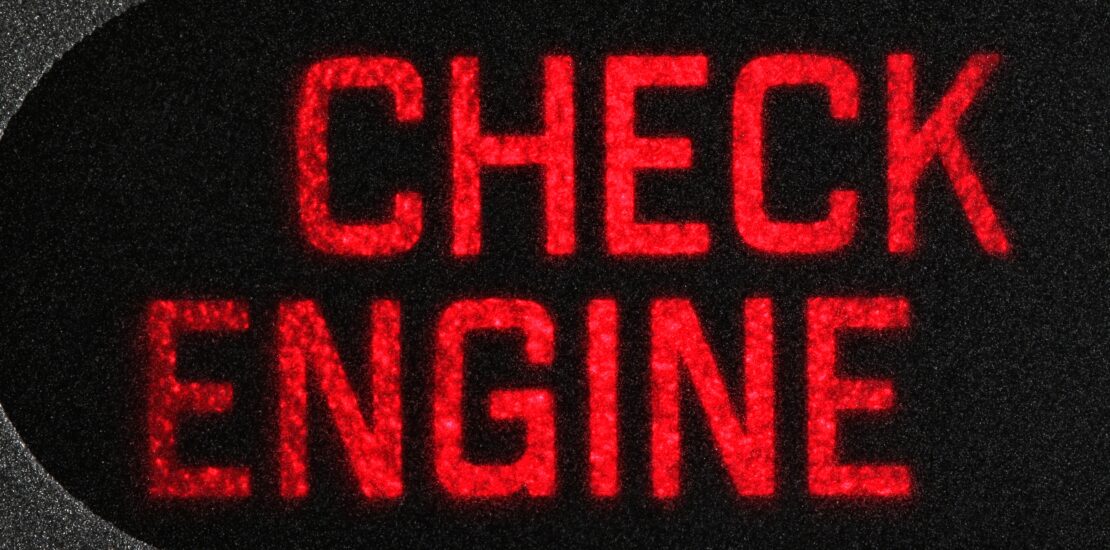Toyota Check Engine Light: Identify Common Causes
- December 9, 2023
- Posted by: Wentworth
- Category: Auto Diagnostics

 Toyota owners love their cars. They are reliable, affordable, and can last forever with the proper maintenance. Occasionally, the dashboard may unexpectedly light up with an indicator light that requires immediate attention. The Toyota check engine light may illuminate for a variety of reasons. Let’s research how a faulty gas cap, bad oxygen sensor, or mass airflow sensor failure can activate your Toyota check engine light. We’ll walk you through the top culprits and explain how they can impact your Toyota’s performance.
Toyota owners love their cars. They are reliable, affordable, and can last forever with the proper maintenance. Occasionally, the dashboard may unexpectedly light up with an indicator light that requires immediate attention. The Toyota check engine light may illuminate for a variety of reasons. Let’s research how a faulty gas cap, bad oxygen sensor, or mass airflow sensor failure can activate your Toyota check engine light. We’ll walk you through the top culprits and explain how they can impact your Toyota’s performance.
Check Engine Light: Identify Common Causes
The check engine light is a warning system that illuminates when your Toyota’s onboard diagnostics system detects a potential issue. While there are numerous reasons why this light may come on, some causes are more common than others. Ready to become a check engine light expert? Here are a few of the top culprits:
Loose or Faulty Gas Cap
A faulty gas cap is a very common cause of a check engine light. When the gas cap isn’t properly sealed, it can trigger the light to come on. Thankfully, this is an easy fix. Remove your gas cap and do a visual inspection. Are there cracks or gaps in the seal or the cap? Does it tighten completely, or is it loose? If you suspect a faulty gas cap, get it replaced.
Oxygen Sensor Malfunction
Oxygen sensors monitor the amount of oxygen contained in the exhaust system. An inoperable sensor can decrease fuel efficiency and damage the catalytic converter. Schedule a diagnostic service with your technician if you suspect an oxygen sensor malfunction.
Mass Airflow Sensor Failure
The mass airflow sensor measures the volume of air entering the engine. If this sensor fails, it can lead to poor engine performance and increased fuel consumption. Consult your mechanic to diagnose and replace the mass airflow sensor if necessary.
Diagnose Check Engine Light Problem
When your check engine light comes on, it’s important to diagnose the problem promptly to avoid damage to your Toyota. Whether you enjoy troubleshooting yourself or prefer to schedule a service, here are a few suggestions to get you started:
Check for Other Warning Signs
Pay attention to other warning signs and symptoms your vehicle exhibits. Is it running rough? Are you experiencing a decrease in power or acceleration? These additional clues can help narrow down the potential causes of the check engine light.
Check Engine Light Diagnostic Tool
If you enjoy working on your own Toyota, invest in a quality diagnostic tool to read the Diagnostic Trouble Codes (DTCs) stored in your Toyota’s onboard computer. These codes provide valuable information about the issue triggering the check engine light. Connect the diagnostic tool to the OBD-II port under your dashboard and follow the instructions to retrieve the codes.
Research the Codes
Once you have the DTCs, research them online or consult your vehicle’s service manual to understand their meaning. Each code corresponds to a particular problem within the engine or emissions system. Understanding the codes will give you a better idea of the problem.
Inspect Visible Components
Inspect the visible components under the hood, such as wiring connections, hoses, and belts. Look for any signs of damage or wear causing the check engine light to come on. It’s okay if you do not see anything obvious. Many issues are not visible and will require a professional diagnosis.
Maintenance and Repairs
Routine maintenance can help retain your Toyota’s performance over its lifetime. At Wentworth Automotive, our ASE-certified technicians specialize in diagnostic services and repairs on all foreign and domestic makes.
Schedule Your Toyota Check Engine Light Service
Call us at (858) 541-1044 or visit our website to reserve your Toyota check engine light service today!

